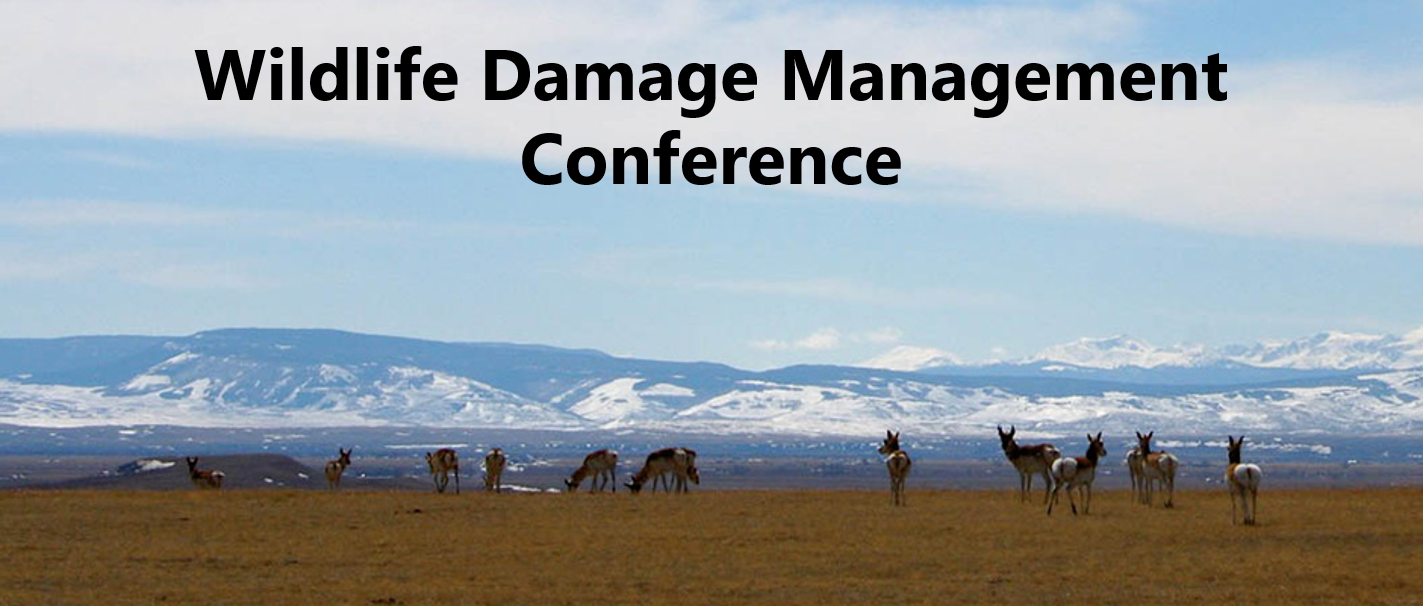Location
Orange Beach, AL
Start Date
27-2-2017 11:30 AM
Description
Wildlife managers in many countries around the world are facing similar challenges, which include: a lack of means to address invasive species and locally overabundant native species issues particularly in the face of declining fiscal resources, reduced capacity to achieve management goals, and a need to garner public support in the wake of changing societal values and increasing human populations. Meeting these challenges requires building off the profession’s successes and developing new paradigms and strategies to curtail the negative impacts invasive and overabundant species are having on our natural resources. Like our predecessors in conservation succeeded in developing our profession and initiating a movement that led to the recovery of many valued native species, now it is us who face a comparable albeit somewhat opposite mandate. Our charge is to curtail and reverse the further establishment and impacts of invasive and overabundant species. We must not fail, but with just existing methods and decision processes we cannot succeed. Using wild pigs as an example invasive species and white-tailed deer as a corollary locally overabundant native species, we begin to lay out why we believe we have entered a second herculean phase of our profession that is as crucial to the quality of our future as the initiation of conservation was a century ago.
Recommended Citation
Vercauteren, Kurt; Davis, Amy; and Pepin, Kim, "Phase 2 Wildlife Management - Addressing Invasive and Overabundant Wildlife: The White-Tailed Deer Continuum and Invasive Wild Pig Example" (2017). Wildlife Damage Management Conference. 2.
https://digitalcommons.usu.edu/wdmconference/2017/session2/2
Phase 2 Wildlife Management - Addressing Invasive and Overabundant Wildlife: The White-Tailed Deer Continuum and Invasive Wild Pig Example
Orange Beach, AL
Wildlife managers in many countries around the world are facing similar challenges, which include: a lack of means to address invasive species and locally overabundant native species issues particularly in the face of declining fiscal resources, reduced capacity to achieve management goals, and a need to garner public support in the wake of changing societal values and increasing human populations. Meeting these challenges requires building off the profession’s successes and developing new paradigms and strategies to curtail the negative impacts invasive and overabundant species are having on our natural resources. Like our predecessors in conservation succeeded in developing our profession and initiating a movement that led to the recovery of many valued native species, now it is us who face a comparable albeit somewhat opposite mandate. Our charge is to curtail and reverse the further establishment and impacts of invasive and overabundant species. We must not fail, but with just existing methods and decision processes we cannot succeed. Using wild pigs as an example invasive species and white-tailed deer as a corollary locally overabundant native species, we begin to lay out why we believe we have entered a second herculean phase of our profession that is as crucial to the quality of our future as the initiation of conservation was a century ago.


